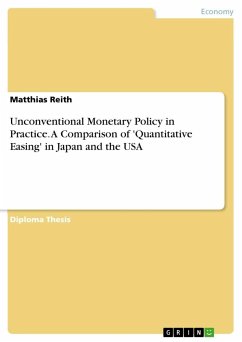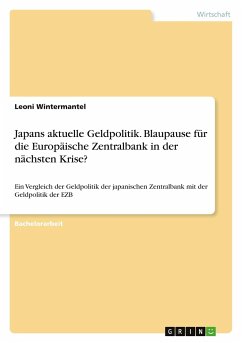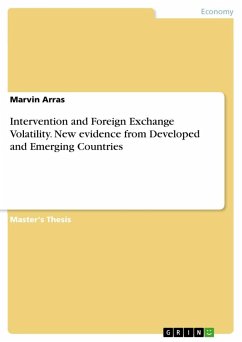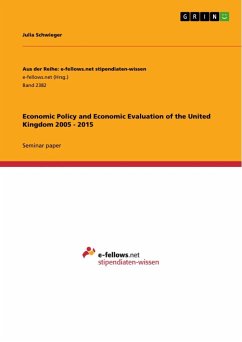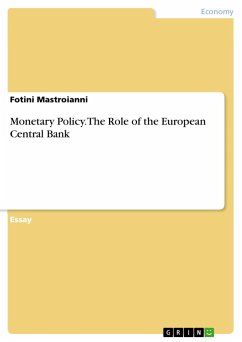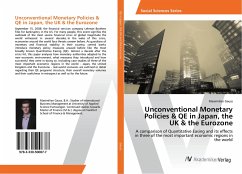
Unconventional Monetary Policies & QE in Japan, the UK & the Eurozone
A comparison of Quantitative Easing and its effects in three of the most important economic regions in the world
Versandkostenfrei!
Versandfertig in 6-10 Tagen
28,99 €
inkl. MwSt.

PAYBACK Punkte
14 °P sammeln!
September 15, 2008: the financial services company Lehman Brothers files for bankruptcy in the US. For many people, this event signifies the outbreak of the most severe financial crisis of global magnitude the world witnessed in several decades. In the wake of this crisis, economies around the world face threats unseen before. As guardians of monetary and financial stability in their country, central banks introduce monetary policy measures unused before like the most broadly known Quantitative Easing (QE). Almost a decade after the crisis hit, this paper analyses how monetary authorities adap...
September 15, 2008: the financial services company Lehman Brothers files for bankruptcy in the US. For many people, this event signifies the outbreak of the most severe financial crisis of global magnitude the world witnessed in several decades. In the wake of this crisis, economies around the world face threats unseen before. As guardians of monetary and financial stability in their country, central banks introduce monetary policy measures unused before like the most broadly known Quantitative Easing (QE). Almost a decade after the crisis hit, this paper analyses how monetary authorities adapted to the new economic environment, what measures they introduced and how successful they were in doing so. Including case studies of three of the most important economic regions in the world - Japan, the United Kingdom and the Eurozone - real-world scenarios are outlined in detail regarding their QE programs' structure, their overall monetary volumes and their usefulness in retrospect as well as for the future.



